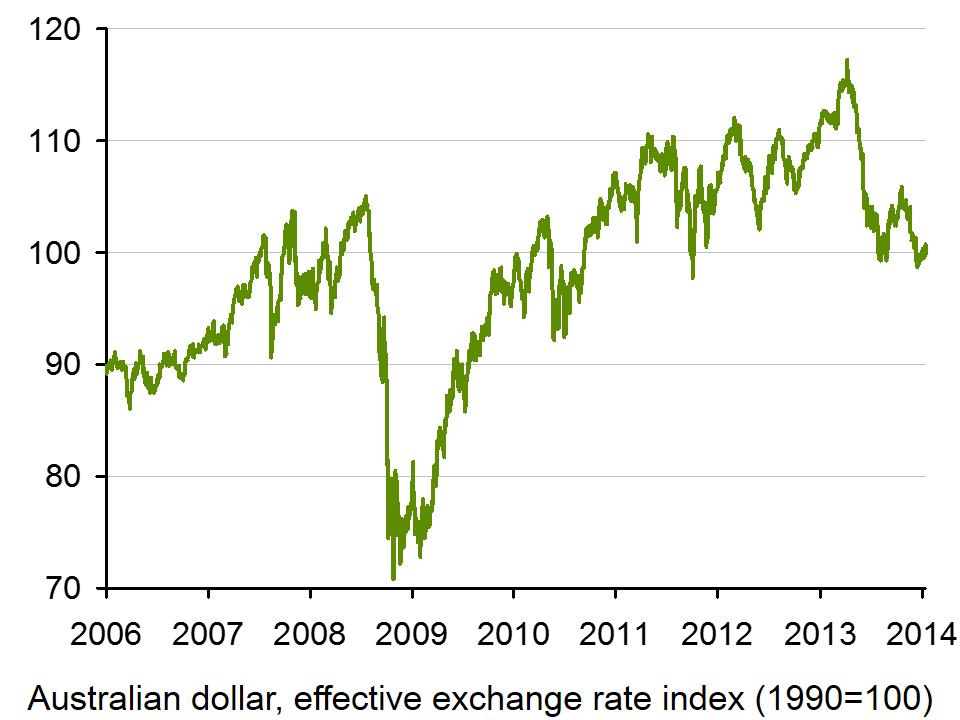 When the rest of the developed world went into recession after the financial crisis of 2007/8, the Australian economy kept growing, albeit at a slightly lower rate (see chart 1: click here for a PowerPoint). Then as the world economy began to grow again after 2009, Australian grow accelerated. Partly this was the result of a strong growth in demand for Australian mineral exports, such as coal, iron ore and bauxite, especially from China and other east Asian countries.
When the rest of the developed world went into recession after the financial crisis of 2007/8, the Australian economy kept growing, albeit at a slightly lower rate (see chart 1: click here for a PowerPoint). Then as the world economy began to grow again after 2009, Australian grow accelerated. Partly this was the result of a strong growth in demand for Australian mineral exports, such as coal, iron ore and bauxite, especially from China and other east Asian countries.
But in 2013, Australian growth slowed and jobs grew by their lowest rate for 17 years. Employment actually fell by 22,600 in December and unemployment was only prevented from rising by a fall in the participation rate. The Australian dollar, which has been depreciating in recent months, fell further on the news about jobs, reaching its lowest level for over two years (see chart 2: click here for a PowerPoint).
The following articles look at the reasons behind Australia’s slowing growth and at possible reactions of the Australian government and the Reserve Bank of Australia (Australia’s central bank). They also look at the link between economic performance and policy on the one hand and the exchange rate on the other.
Aussie Hits a 4 Year Low As Jobs Picture Turns Grim FX Street, Boris Schlossberg (16/1/14)
Unemployment rises: Rate cut on the cards? The Motely Fool, Mike King (16/1/14)
Australia posts its lowest annual jobs growth in 17 years The Guardian (16/1/14)
Australian dollar drops to four-year low after unemployment figures released The Guardian (16/1/14)
Unemployment … Coming to a Suburb Near You Pro Bono Australia News (13/1/14)
Jobs disappear in growth crunch Sydney Morning Herald, Glenda Kwek (17/1/14)
Questions
- Why has Australian economic growth slowed?
- Why has the Australian dollar been depreciating in recent months?
- Why did the Australian dollar fall further on the news that economic growth had slowed and employment had fallen?
- Find out what has been happening to commodity prices in the past three years (see Economic Data freely available online and especially site 26) How has this affected (a) the current account of Australia’s balance of payments; (b) the exchange rate of the Australian dollar?
- If commodity prices are in US dollars, how is a depreciation of the Australian dollar likely to affect Australia’s balance of payments?
- How are possible fiscal and monetary responses in Australia likely to affect the exchange rate of the Australian dollar?
- What determines the magnitude of the rise or fall in demand for Australian exports as the world economy grows or declines? How are the determinants of the price and income elasticities of demand for Australian exports relevant to your answer?

